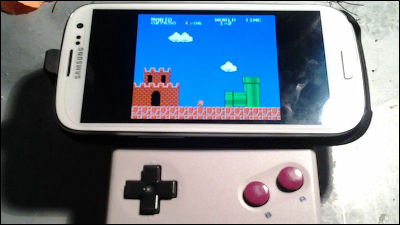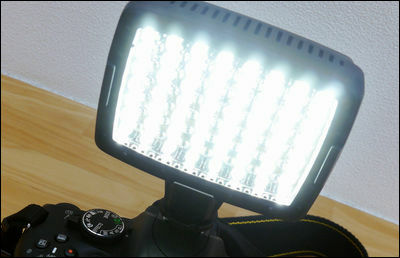A fierce man who made his own nuclear battery that does not need to be replaced for more than 10 years and incorporated it into a portable game machine appeared

The advantage of handheld game consoles such as Game Boy is that they can be played anytime, anywhere, but because they operate on dry batteries and rechargeable batteries, they have the problem of having to replace and recharge the batteries on a regular basis.
Building A Nuclear Powered Gameboy (Lasts 100 Years!)-YouTube
When you think of 'power generation with nuclear power,' the general image is a nuclear power plant.

The basic system of a nuclear power plant is to 'cause nuclear fission in a nuclear reactor, boil water with the heat, and turn a turbine with steam to generate electricity.'

However, it is not possible to prepare a nuclear reactor with a small atomic battery. Therefore, we will prepare a fluorescent capsule containing tritium.

Tritium is a

Neutrons in the nucleus have a certain probability of beta decay , becoming protons, electrons, and anti-electron neutrinos. Of these, electrons are emitted as beta rays with an energy of approximately 5.7 k electron volt. The remaining energy is released as anti-electron neutrinos.
The remaining atom becomes the helium isotope '

In other words, tritium constantly emits weak beta rays. When this tritium is enclosed in a glass tube coated with a phosphorescent substance inside, it becomes a tritium tube that always emits light. Weak beta rays cannot penetrate the glass of tritium tubes, so they are highly safe and are used in various situations such as clock faces and fishing tackle.

This time, Mr. Charnas devised a photoelectric conversion type atomic battery using this tritium tube and a solar cell.

There are various types of emission colors for tritium tubes, but as a result of Mr. Charnas' experiments with six types of green, white, yellow, blue, purple, and red, it is said that green had the highest power generation.

Arrange the tritium tubes on top of the solar cell ...

Then sandwich it with solar cells.

When I measured the power generated by this self-made atomic battery, it was 1.5 μW. μ (micro) means 'one millionth'.

Speaking of handheld game consoles, Nintendo's Game Boy. The power consumption of a Game Boy that runs on four AA batteries is

Therefore, as a result of collecting and verifying LCD game machines that Tetris can play, it was found that the power consumption of the following game machines is about 1000 μW. If this is the case, it may be possible to operate with a nuclear battery depending on the method, Mr. Charnas said.

However, in order to run a 1000 μW game machine with a 1.5 μW nuclear battery, a mechanism to store the electricity of the nuclear battery is required somewhere. According to Mr. Charnas, general capacitors have a lot of leakage current and are not suitable for the purpose of storing very weak electricity little by little like this time.
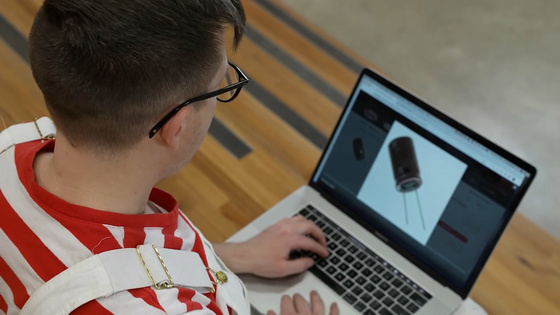
Therefore, Mr. Charnas paid attention to the thin-film all-solid-state battery
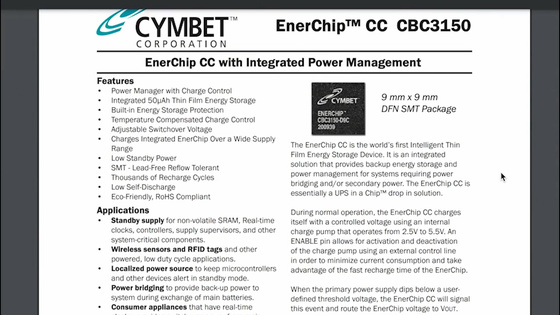
The CBC3150, a thin-film all-solid-state battery, was a very rare battery at the time of writing the article, and it was quite difficult to obtain it, Charnas said. The size of CBC 3150 is 9mm x 9mm, and it looks like this when pinched with tweezers.
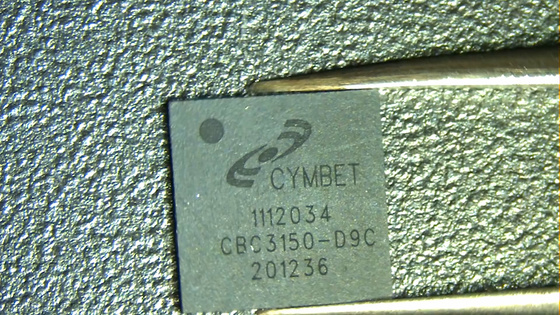
I will design the board on which the atomic battery and CBC3150 will be mounted.

However, the electrodes of the CBC3150 do not reach the precision soldering iron, and there is no instrument for printing very fine circuits. Therefore, the circuit is manually printed on the board using paste-like solder and stencil.
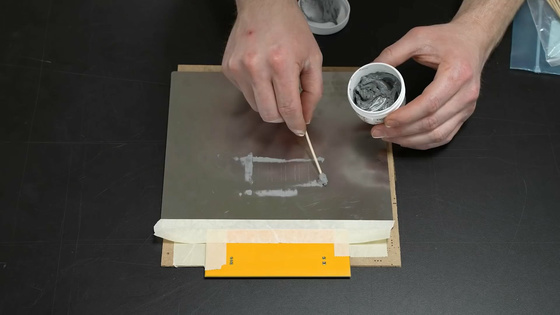
Also, because the batteries are so small, you need to place the parts while looking at the microscope.

After placing the parts, reflow with a hot plate.
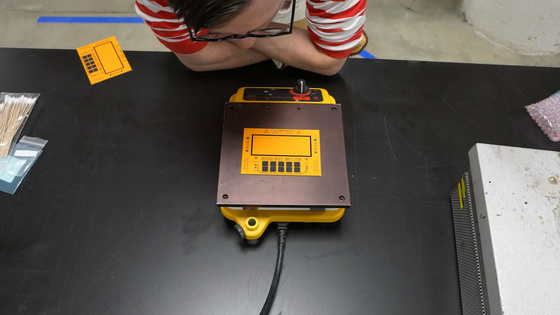
Completed by sticking a self-made acrylic plate. It is equipped with one self-made atomic battery and ten CBC3150.
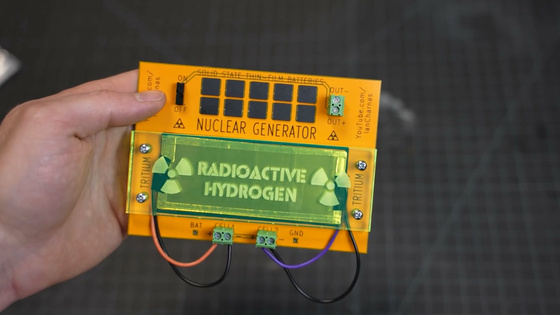
I'd like to attach it to a game console and play it ... but it's impossible to move a 1000μW game console with a 1.5μW atomic battery in haste. First of all, it is necessary to 'store the electricity generated by the atomic battery in 10 CBC3150s'.

According to the calculation, you should be able to play for about 10 minutes with a week's charge.

After a one-week charging period, when I turned on the power immediately, the liquid crystal was displayed without any problem ...
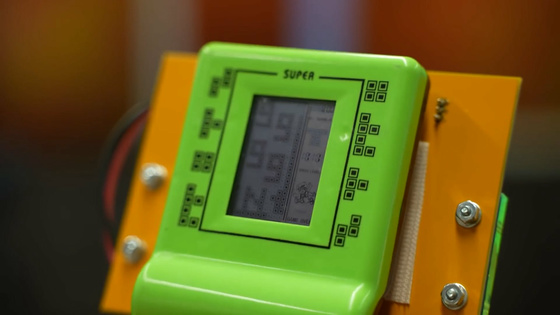
The screen disappeared after playing for about 4 to 5 seconds.
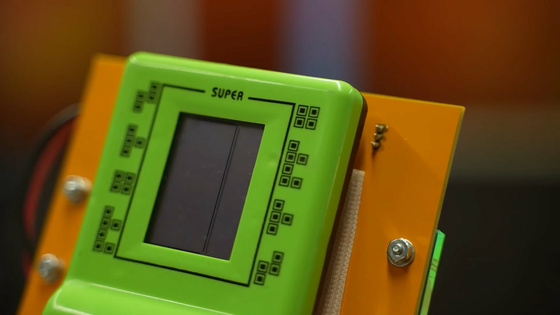
Upon investigation, it was found that there was a problem with the CBC3150 thin-film all-solid-state battery.

However, because the CBC3150 was out of stock and could not be replaced, Charnas prepared the same thin-film all-solid-state battery, the EnerChip CBC050.
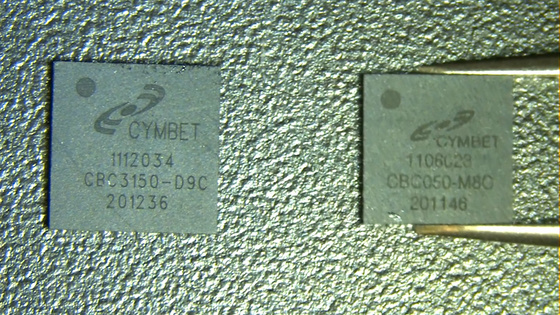
Since the all-solid-state battery that becomes the charging part has changed, the board has also been remade.

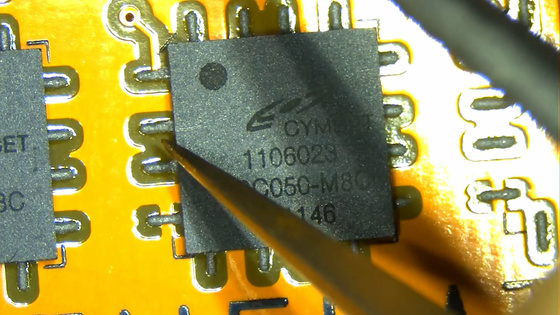
Attach the newly made nuclear battery unit to the game console.
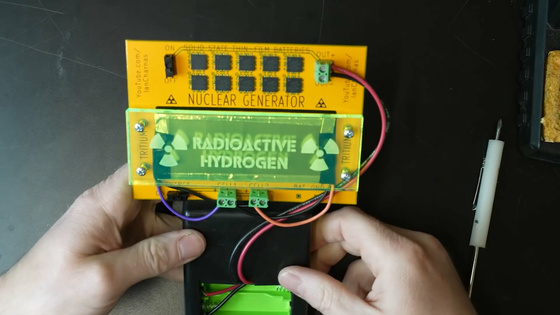
Then, after a one-week charging period, I challenged the second test play. Charnas started playing the game while measuring the time with a timer on his smartphone.

This time I was able to continue playing the game without any problems.
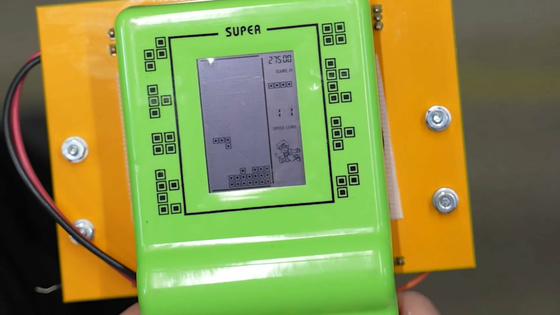
It was said that he was able to play for 55 minutes in a row, far exceeding expectations. Tritium has a half-life of 12.3 years, so it takes a week to charge for an hour to play, but for 10 years you don't have to replace the battery. However, as the radiation dose of tritium attenuates, the amount of light emitted also attenuates, so theoretically, the charging period will gradually increase.

In addition, I am concerned about the radiation dose of nuclear batteries that use tritium. When Mr. Charnas actually measured it with a Geiger counter, the needle hardly shook and radiation leakage was hardly measured.
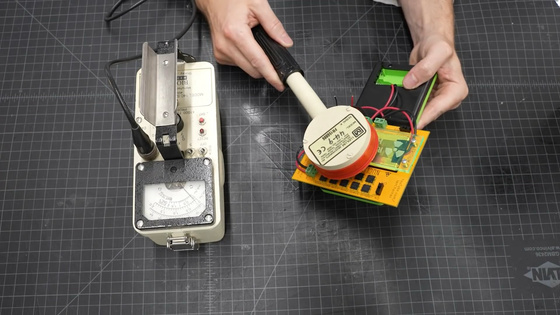
When I measured the uranium ore, the needle moved so much that it couldn't be shaken, so the Geiger counter wasn't broken either.
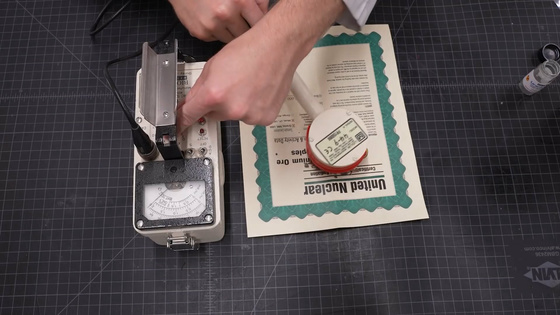
When I measured the curb that was constantly exposed to the outdoors at the same Geiger counter, the needle moved a little. The radiation dose from atomic batteries is less than the natural radiation dose, Charnas said.
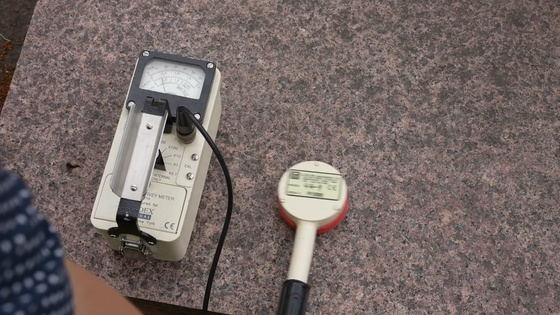
Related Posts:

